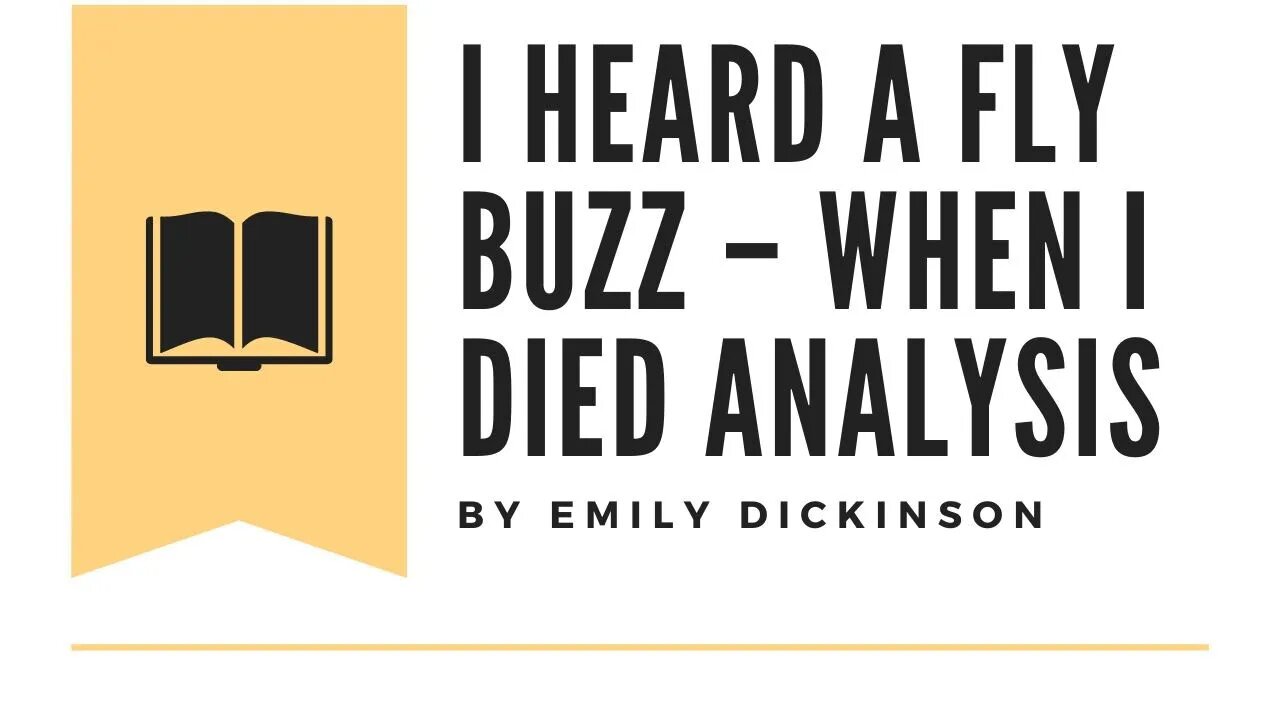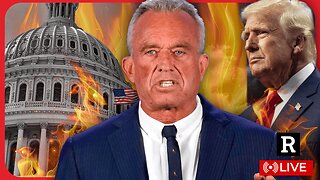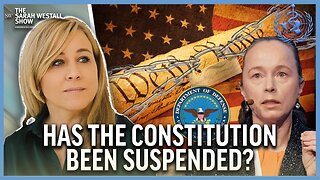Premium Only Content

I heard a Fly buzz – when I died by Emily Dickinson Analysis
In this poem by Emily Dickinson, the speaker is telling us about what happened when they died. But there's something unusual - a fly made an unexpected appearance.
The speaker tells us that they heard a fly buzzing around at the moment of their death. It's strange because we don't usually think about flies being present at such a solemn moment.
Despite the presence of the buzzing fly, the room is described as "still," which means it's quiet and peaceful. The speaker sets up a contrast between the fly's noise and the calmness around them.
The stillness in the room is compared to the quietness in the air. It's as if everything around the speaker has become hushed and serene.
Here, the poet uses a metaphor to compare the silence to the pause between waves of a storm. It's like a moment of calm before something significant happens.
The people present in the room, probably family and friends, have cried so much that their eyes are dry. This line shows that the speaker's death has caused a lot of sadness and tears.
The last moment of the speaker's life is referred to as the "last Onset." The word "King" likely represents death or the afterlife, which comes to take the speaker away.
The presence of death, represented by the King, is observed by everyone in the room. It's like a solemn event that everyone is witnessing.
Before dying, the speaker gave away their belongings, probably as part of their will or to leave something behind for loved ones.
The speaker is talking about their possessions and what will happen to them after their death.
The speaker assigned their possessions to others, deciding who gets what, and after this was done.
Suddenly, a fly appeared, interrupting the solemn moment and the process of giving away possessions. The fly's presence is unexpected and a bit strange.
The fly is described as having a "Blue" color, and its buzz is described as "uncertain stumbling." The poet uses these words to add to the mystery and uncertainty of the moment.
The fly comes between the speaker and the light, almost as if it's blocking their way to the afterlife or whatever comes next.
The speaker mentions that after the fly's appearance, their vision began to fail. It's as if they couldn't see clearly anymore.
The speaker couldn't see properly anymore; their vision was impaired.
The poem ends abruptly, and the dash at the end suggests that there might be more to the story or feelings left unsaid. It leaves the reader with a sense of mystery and open interpretation.
Themes.
Death and the Afterlife.
The poem revolves around the theme of death and the speaker's experience at the moment of passing. It explores the transition from life to death and the uncertainty of what lies beyond.
Mortality and Impermanence.
The poem highlights the fragility of life and the impermanence of existence. It reminds readers of the inevitability of death and the fleeting nature of human life.
Nature's Presence.
The presence of the fly in the room brings attention to nature's persistence even in significant moments like death. It serves as a reminder of the constant cycle of life and death in the natural world.
Contrast and Duality.
The poem employs contrasts throughout, juxtaposing the stillness in the room with the buzzing of the fly, the moment of death with the interruption of the fly's appearance, and the calmness of the air with the turmoil of emotions in the room.
The Inevitability of Change.
The appearance of the fly disrupts the solemnity of the deathbed scene, underscoring the unpredictability of life and the certainty of change.
Symbols.
The Fly.
The fly is a multi-faceted symbol in the poem. It represents the intrusion of the mundane and ordinary into a profound and sacred moment. It also symbolizes life persisting in the face of death, serving as a reminder of the continuity of nature.
The Stillness.
The stillness in the room symbolizes the quietude and calmness associated with death. It contrasts with the fly's buzzing, emphasizing the transition from life to death.
The King.
The term "King" is a metaphor for death or the figure that comes to claim the speaker's soul. It underscores the gravity and finality of death.
The Windows.
The windows failing symbolize the speaker's diminishing sight as they approach death. It also suggests a closing of the physical world and an opening to the afterlife.
The Color Blue.
The blue color of the fly adds to the mysterious and surreal ambiance of the poem. It might symbolize an otherworldly presence or evoke feelings of sadness and melancholy.
-
 1:23:44
1:23:44
Space Ice
13 hours agoSpace Ice & Redeye: Van Damme's The Quest: Pirates, Clowns, James Bond & Bloodsport
47.1K3 -
 59:57
59:57
The StoneZONE with Roger Stone
10 hours agoJ6 Martyr Enrique Tarrio Describes Inhumane Prison Conditions Ordered by Biden | The StoneZONE
44.5K4 -
 16:48
16:48
Tundra Tactical
10 hours ago $8.05 earnedAffordable Medical Gear From ACETAC SHOT Show 2025
74.3K3 -
 1:46:16
1:46:16
Redacted News
13 hours agoRFK CONFIRMATION: Kennedy goes to WAR with Big Pharma Democrats in Fiery Hearing | Redacted Live
257K428 -
 57:31
57:31
Candace Show Podcast
13 hours agoBREAKING! Taylor Swift Turns Against Blake Lively & Ryan Reynolds | Candace Ep 141
235K187 -
 1:04:59
1:04:59
Sarah Westall
10 hours agoRFK Jr Report, Constitution Suspended, War Time Procedures in Place, WHO Exit, DOD w/ Sasha Latypova
77.2K34 -
 1:56:37
1:56:37
Melonie Mac
14 hours agoGo Boom Live Ep 35!
67K15 -
 1:01:13
1:01:13
LFA TV
17 hours agoPRESIDENT TRUMP SIGNS LAKEN RILEY ACT | BASED AMERICA 1.29.25 6pm
72.5K8 -
 1:43:07
1:43:07
2 MIKES LIVE
11 hours ago2 MIKES LIVE #172 News Breakdown Wednesday!
38.8K2 -
 1:26:16
1:26:16
The Big Mig™
13 hours agoJ6’r Ryan Samsel Free At Last The BOP & DOJ Exposed
37.5K4